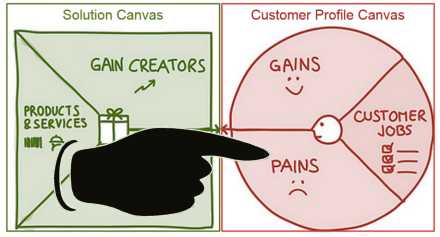Once you have a pretty good idea of the job your customer segment has to do, it is time to ferret out and define their pain points. You can use the following questions to more accurately describe the customer’s negative emotions, undesirable costs and situations, and risks they experience before, during, and after their job.
- What takes too long, costs too much, or requires too much effort in your customer’s opinion?
- What frustrates, annoys, or gives your customer a headache?
- How are the current solutions under-performing for your customer? For example, is there a lack of features or low performance? Are other solutions prone to malfunctions or errors?
- What are the main difficulties or challenges your customer encounters? For example, do they have difficulty understanding how things actually work or get done?
- What negative social consequences could your customer encounter? For example, what causes your customer to lose face, power, trust, or status?
- Are there financial, social, or technical risks that your customer fears?
- Are there big issues, concerns, or worries that keeps your customer up at night?
- What are the common mistakes that your customer makes?
- Finally, what barriers keep your customer from adopting a solution? For example, are upfront costs too high? Are learning curves too lengthy? Does the customer resist change?
After answering these questions, attempt to rank your customer’s pain points according to their significance and frequency.
Have you defined your costumer’s pain points?












